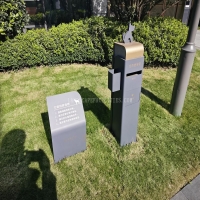Welcome to the website for landscape facilities products and knowledge.
How does the choice of countertop material impact the overall acoustics and sound absorption of a landscape bar counter?
The selection of countertop material significantly influences the acoustic environment of landscape bar counters, affecting both sound reflection patterns and absorption qualities. Hard, non-porous surfaces like quartz or granite create highly reflective acoustic environments where sound waves bounce freely, resulting in elevated noise levels that can reach 70-80 decibels during peak hours. These materials, while durable and aesthetically pleasing, contribute to acoustic challenges in busy bar environments by amplifying conversations, glass clinks, and equipment noises.
Conversely, porous and textured materials such as honed limestone, terrazzo with resin binders, or specialized acoustic composites demonstrate superior sound absorption capabilities. These materials can absorb up to 30% more ambient noise compared to their non-porous counterparts through their microscopic surface irregularities that disrupt sound wave energy. The mass and density of the material further determine its sound transmission properties, with thicker countertops providing better bass frequency attenuation.
Engineered wood surfaces with integrated acoustic underlays present an innovative solution, combining aesthetic appeal with functional noise reduction. These systems can incorporate hidden sound-absorbing layers that capture vibrations before they propagate through the structure. The edge profiles and overhang design additionally influence acoustic performance, with rounded edges diffusing sound more effectively than sharp, angular designs.
Sustainable materials like recycled glass composites now offer unexpected acoustic benefits due to their heterogeneous composition, which creates natural sound-diffusing properties. The installation method itself plays a crucial role—countertops isolated from the substructure with acoustic damping compounds prevent structure-borne noise transmission.
Ultimately, the ideal countertop material balances acoustic performance with practical requirements, creating landscape bars that maintain social energy without compromising auditory comfort. Designers should consider both the Noise Reduction Coefficient (NRC) and Sound Transmission Class (STC) ratings when selecting materials for acoustically sensitive environments.
Related search:

Recommendation
Outdoor cat and dog feces trash can; Community pet trash can; Metal multi-color design